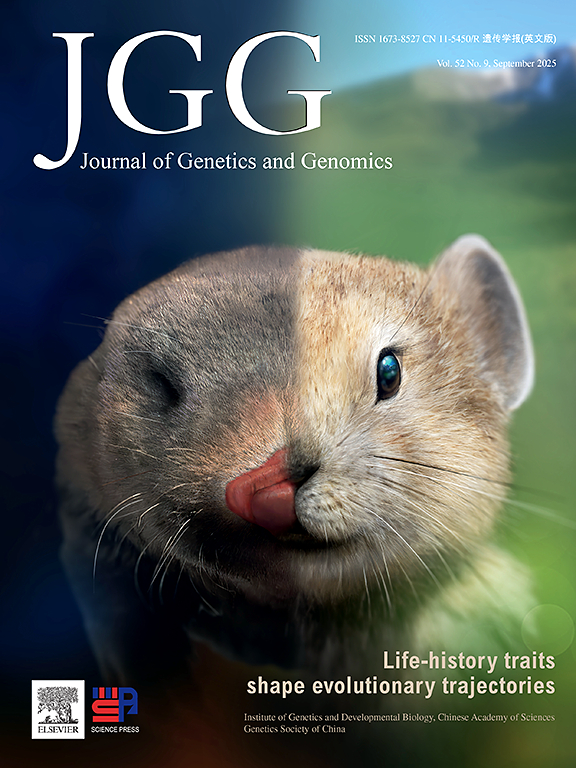Jing Pan,
Fei Zhao,
Guifang Zhang,
Yu Pan,
Lijun Sun,
Ning Bao,
Peng Qin,
Lyuqin Chen,
Jie Yu,
Yijing Zhang,
Lin Xu
2019, 46(3): 133-140.
doi: 10.1016/j.jgg.2019.03.001
Abstract:
De novo root regeneration (DNRR) has wide applications in agriculture such as those related to cutting technology. Detached Arabidopsis thaliana leaf explants can regenerate adventitious roots without added hormones. The regenerative ability is highly dependent on the developmental status of the leaf. An immature leaf has a higher regenerative ability, while a mature leaf is difficult to regenerate. Using RNA-Seq analysis, we showed that the expression levels of many genes, including those in the auxin network, changed during leaf maturation. Particularly, the expression levels of many YUCCA (YUC) genes in the auxin biosynthesis pathway are responsive to leaf maturation. Overexpression of YUC1 in the yuc-1D dominant mutant rescued the rooting defects caused by leaf maturation. In addition, YUC4 expression levels were also affected by circadian rhythms. The regenerative ability was reduced in both immature and mature mutant leaf explants from the new wuschel-related homeobox 11-3 (wox11-3) and wox12-3 mutant alleles created by the CRISPR/Cas9 method. Overall, the transcriptome and genetic data, together with the auxin concentration analysis, indicate that the ability to upregulate auxin levels upon detachment may be reduced during leaf maturation. Thus, multiple developmental and environmental signals may converge to control auxin accumulation, which affects the efficiency of the WOX11/12-mediated DNRR from leaf explants.







